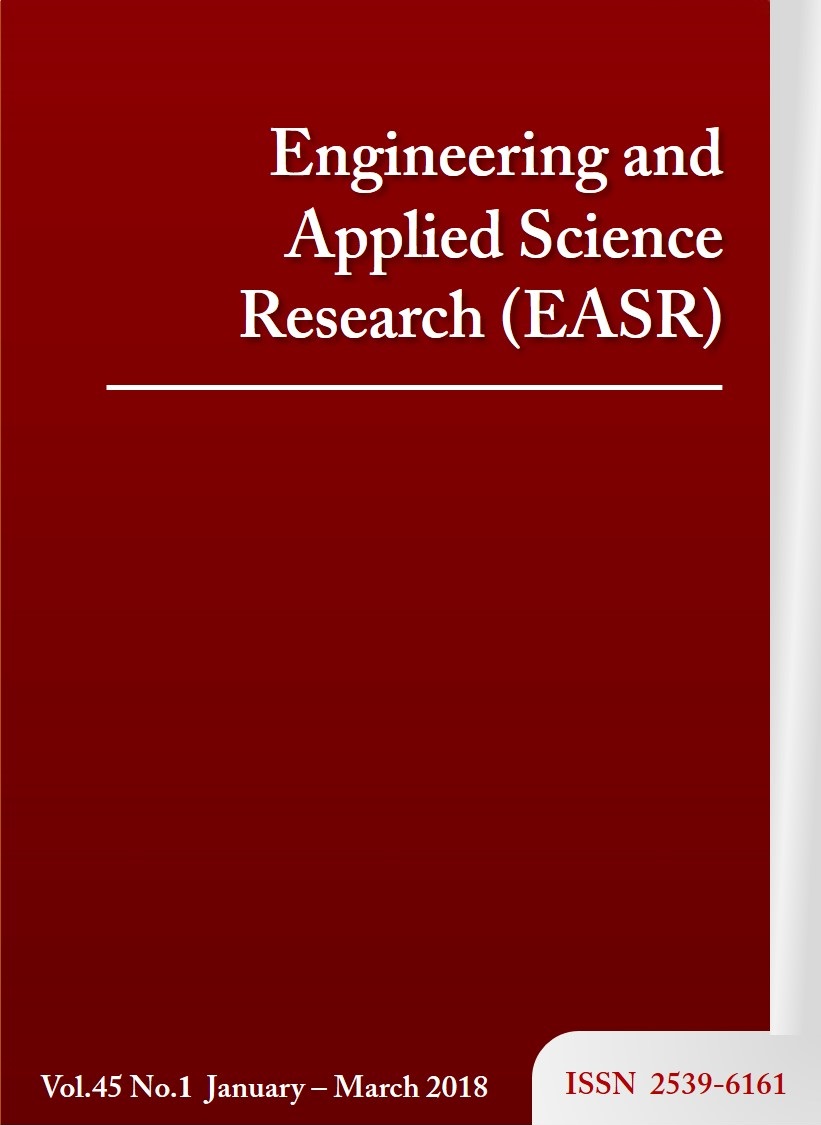Selection of an optimal neural network architecture for maintenance workforce size prediction using grey relational analysis
Main Article Content
Abstract
Prediction is necessary in industrial practices according to the norms of modern scientific development. Recognising maintenance problems before they occur potentially helps to improve workforce performance as effective preventive maintenance actions are developed. A large number of industrial systems worldwide owe their gains to predictive analysis. Furthermore, precise predictions can aid maintenance policy makers in making decisions as well as promoting the quality of decision making in maintenance, particularly on maintenance workforce issues. This study reports the use of grey relational analysis cum artificial neural networks (ANN) for maintenance workforce size prediction through the selection of an optimal neural network architecture. Workforce cost, workload, productivity and effectiveness represent the input parameters utilised in the ANN framework. The method competitively determines the most suitable ANN architecture for maintenance workforce size. Comparison of the ANN model results reveal that its performance is better than a fuzzy inference system. Conclusively, the application of the framework advanced in this work was found useful with practical data obtained from a process industry that operates as a brewery. The efficiency of the proposed approach was documented.
Article Details
This work is licensed under a Creative Commons Attribution-NonCommercial-NoDerivatives 4.0 International License.
References
CPS 2005. Workforce planning kit: Supply/demand analysis and gap analysis, Washington DC, Human Resource Planning, Accessed 20th April 2016.
Aref, M. and Sabah, M. 2015. Manpower planning for demand forecasting of faculty members using trend analysis and regression. International Journal of Academic Research in Business and Social Sciences, Vol. 5, No. 2, pp. 11-23.
Ighravwe, D.E. and Oke, S.A. 2014. A non-zero integer nonlinear programming model for maintenance workforce sizing. International Journal of Production Economics, Vol. 150, pp. 204-214.
Belmokaddem, M., Mekidiche, A. and Sahed, A. (2009). Application of a fuzzy goal programming approach with different importance and priorities to aggregate production planning. Journal of Applied Quantitative Methods, Vol. 4, No. 3, pp. 317-331.
Alfares, H.K. 1999. Aircraft maintenance workforce scheduling: A case study. Journal of Quality in Maintenance Engineering, Vol. 5, No. 2, pp. 78-88.
Adebiyi K.A., Mudeshiru L.O. and Ajayeoba A.O. 2007. Development of model for determination of crew-size requirements for a bolt and nut manufacturing industry. Journal of Engineering and Applied Sciences, Vol. 2, No. 12, pp. 1782-1785.
Wu W-Y and Chen S.-P. 2005. A prediction method using grey method GMC (1,n) combined with grey relational analysis: A case study on internet access population forecast. Applied Mathematics and Computation, Vol. 169, pp. 198-217.
Hu, M.Y. and Tsoukalas C. 1999. Combining conditional volatility forecasts using neural networks:An application to the EMS exchange rates. Journal of International Financial Markets, Institutions and Money, Vol. 9, No. 4, pp. 407-422.
Furness, P.N., Levesley, J., Luo, Z., Taub, N., Kazi, J.I., Bates, W.D. and Nicholson, M.L. (1999). A neural network approach to biopsy diagnosis of early acute renal transplant rejection. Histopathology, Vol. 35, 461-467.
Vamsidhar, E., Varma, K.V.S.R.P., Rao, P. and Satapati, R. 2010. Prediction of rainfall using backpropagation neural network model. International Journal of Computer Science and Engineering. Vol. 2, No. 4, pp. 1119-1121.
Iwasokun, G.B., Egwuche, O.S. and Gabriel, J.A. 2015. Neural network-bases health personnel monitoring system. African Journal of Computing and ICT, Vol. 8, No. 1, pp. 79-87.
Engelbrencht, A.P. 2007. Artificial Intelligence: An Introduction. England: John Wiley and Sons Limited.
Krenker, A., Bester, J. and Kos, A. 2011. Introduction to the Artificial Neural Networks. In: K. Suzuki, Ed. Artificial Neural Networks: Methodological Advances and Biomedical Applications. Croatia: InTech: pp. 3-18.
Kamruzzaman, J., Begg, R.K. and Sarker, R.A. 2006. Artificial Neural Networks in Finance and Manufacturing, Idea group publishing, London.
Ross, T.J. 2004. Fuzzy Logic with Engineering Applications. England: John Wiley and Sons Ltd.
Zouari, R., Sieg-Zieba, S. and Sidahmed, M. (2004). Fault detection system for centrifugal pumps using neural networks and neuro-fuzzy techniques. Surveillance 5 CETIM Senlis, October 11-13, 2004, pp. 1-9.
Kaastra, I. and Boyd, M. 2006. Designing a neural network for forecasting financial and economic time series. Neurocomputing, Vol. 10, pp. 215-236.
Firat M., Denizli, T. 2007. Sugeno fuzzy inference system for river flow estimation, International Congress on River Basin Management, General Directorate of State Hydraulic Works, Turkey.
Jang, J., Sun, C. and Mizutani, E. (1997). Neuro-fuzzy and Soft Computing. Prentice Hall.
Lu, H.C., Yeh,M-F. 2002. Robot path planning based on modified grey analysis, Cybernetics and Systems, Vol. 33, No. 2, pp 129-159.
Hasani H., Tabatabaei S.A. and Amiri G. 2012. Grey relational analysis to determine the optimum process parameters for open-end spinning yarns. Journal of Engineered Fibers and Fabrics. Vol. 7, No. 2, pp. 81-86.
Ofori, T., Ackah, B. and Ephraim, L. 2012. Statistical models for forecasting road accident injuries in Ghana. International Journal of Research in Environmental Science and Technology, Vol. 2, No. 4, pp. 143-149.
Ighravwe, D.E., Oke, S.A. and Adebiyi, K.A. 2015. A reliability-based maintenance technicians’ workload optimisation model with stochastic considerations. Journal of Industrial Engineering International. In press.


